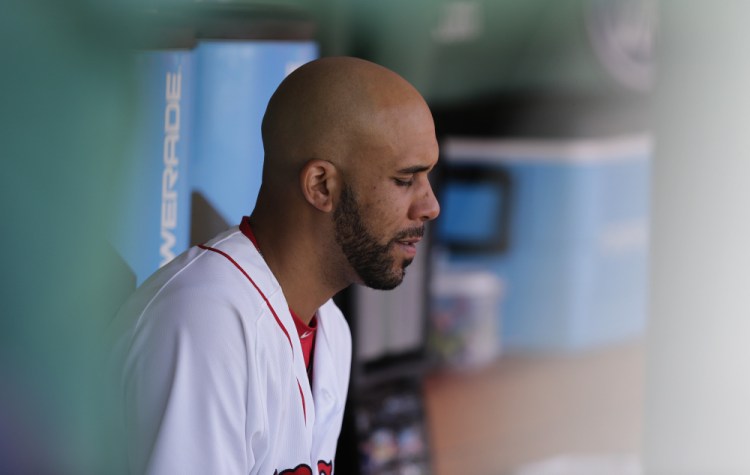April is a time for snap judgments in baseball. Especially in Boston. It’s the time of year when fans decide how much they are willing to invest – both emotionally and monetarily – in the baseball season.
It’s also a time when things can be wildly distorted.
Take the 2016 Red Sox. They lumbered into Atlanta at about 5 a.m. Monday morning, with the glow of a 12-inning win at Houston a foggy memory. Boston got right back to work some 14 hours later, ready to open their final series at Turner Field with a .500 record.
It’s hard to tell a lot about a team that has won as many games as it has lost. Are the Sox as good as they’ve looked in those nine wins – a team that led the American League with 90 runs scored through Sunday, a team that cranked out 55 hits over the previous four games?
Or, were they as bad as they looked in those nine losses – a team with the league’s worst ERA and the most relief innings pitched of any team?
The Sox signed David Price last winter to a seven-year, $217 million contract to solidify the top of the rotation. Yet Price hasn’t pitched like an ace – at least not yet. He took a 7.06 ERA on this road trip, averaging just 51/3 innings per start.
Craig Kimbrel was the other big offseason acquisition, and he’s also struggled to acclimate himself to Boston. He returned to Atlanta, where he began his career, with a 5.00 ERA. He suffered his first blown save Sunday night. He already took a loss in the Fenway opener.
It would be easy to jump to the conclusion that Price and Kimbrel are the latest in a long line of big-money Boston busts, but doing so would be premature.
In fact, a look at the early-season histories of Price and Kimbrel would reveal that 2016 is not unusual – both stars have suffered slow starts in the past.
Price’s career ERA in March and April is 4.14, a run higher than his overall ERA (3.15). His WHIP is higher in April than in any other month, and his strikeouts-per-nine-innings is the lowest.
Last year Price had a 3.48 ERA at the end of April, a full run higher than the league-leading 2.45 ERA he would finish the season with.
Similarly, Kimbrel has struggled at the start of past seasons. His March/April ERA is 3.03 – nearly double his career mark of 1.71. In fact, his ERA drops significantly as the season wears on: May (2.76), June, (1.29), July (0.84) August (0.76). In September and October, Kimbrel’s career ERA rises slightly to 1.55.
Last year, Kimbrel’s ERA was a staggering 5.19 at the start of May. In fact, he wouldn’t really get comfortable until the end of an 11-game stretch from April 18 to May 19 when he allowed 10 earned runs in 92/3 innings.
Over the remainder of the season, Kimbrel posted a 1.44 ERA and .155 opponents’ batting average – the second-lowest of any National League pitcher with a minimum 40 innings pitched in that span.
Power pitchers often take a little while to settle into a season. Those early-season struggles are often magnified, especially when they are trying to earn the faith of a new fan base. Yet snap decisions based on a small sample size are often forgotten by the end of a long baseball season.
The Sox have looked both good and bad over the first month of the season. May is fast approaching. We’ll have a much better feel for what this team really can do by the middle of that month.
Tom Caron is a studio host for the Red Sox broadcast on NESN. His column appears in the Portland Press Herald on Tuesdays.
Copy the Story LinkSend questions/comments to the editors.



Success. Please wait for the page to reload. If the page does not reload within 5 seconds, please refresh the page.
Enter your email and password to access comments.
Hi, to comment on stories you must . This profile is in addition to your subscription and website login.
Already have a commenting profile? .
Invalid username/password.
Please check your email to confirm and complete your registration.
Only subscribers are eligible to post comments. Please subscribe or login first for digital access. Here’s why.
Use the form below to reset your password. When you've submitted your account email, we will send an email with a reset code.